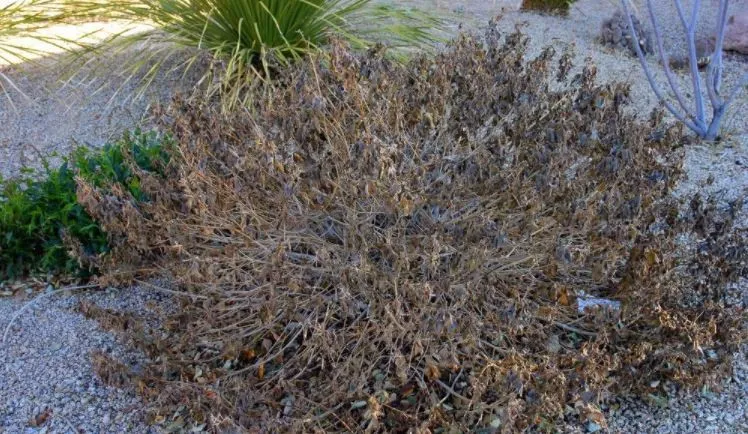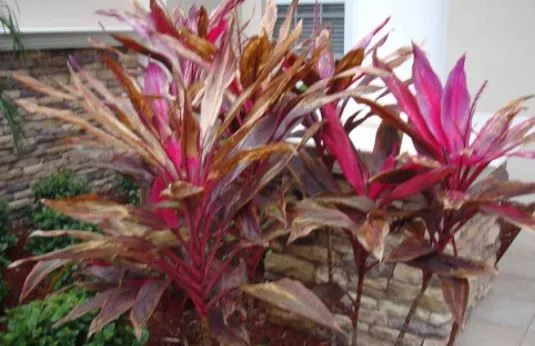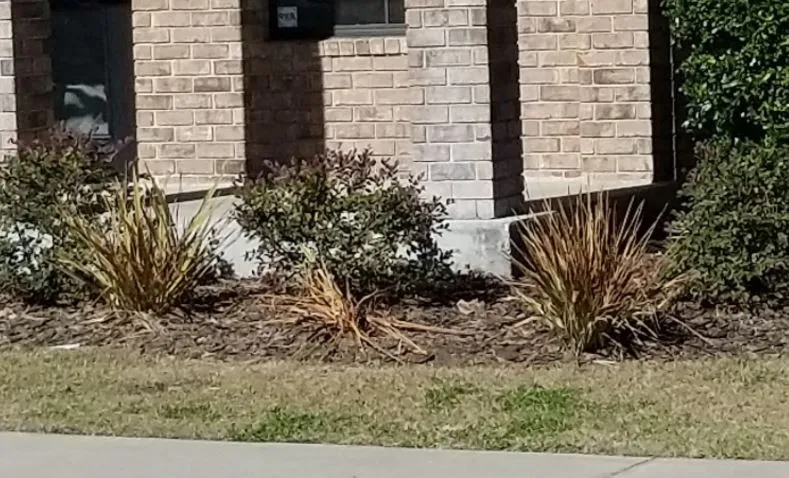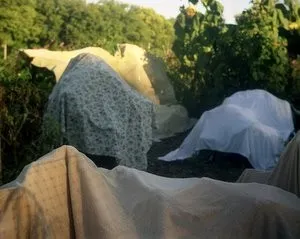All across Gainesville we are seeing substantial damage to plants and landscaping thanks to the cold weather. With weeks still to go before the danger of more frost passes and cold weather returning as soon as later this week, we thought it would be a good time to talk about how to prune, and when not to prune, the plants in your yard.
Ideally, we would wait until late February to prune plants, but realistically, many of us do not want to have unsightly looking plants in our yards until them. There are some things that you can do to make sure your yard looks neat now, while looking out for the over all health of the plant. In Gainesville one of the biggest concerns is that our weather patterns tend to fluctuate, getting warm enough to start tender growth, then cold enough again to cause damage. Care must be used to protect plants from these cycles, as the frost and freezing temperatures are more damaging to new growth.
1. Prune back to the ground.

In this image shown of a frost-damaged lantana, you can see that cold has damaged the plant throughout. There is no green growth underneath these twigs, however we do expect this plant to return in the spring. This dying back and regrowing in the spring is normal for this plant in our Gainesville, Florida landscape zone 8. We recommend pruning back to just a few inches off of the ground. It will look much neater and flush out with new growth when warmer temperatures return.
2. Avoid cutting into live growth.

In this example, you can see there is some cold damage to leaves, but there is plenty of green (pink in this plant) growth as well. In this case, we recommend leaving the plant untouched and waiting until early March to do heavier pruning. Cutting back this plant will leave more of the live plant exposed and at risk for further injury in cold weather. The previously damaged leaves, while unsightly, actually help offer some protection from cold, acting as insulation.
3. Take the middle line.

Here we have an example of some flax lilies in a clients lawn that have been heavily damaged by frost due in part to their unprotected location. If you have plants like these, the best thing would be to wait, but that definitely leaves a lot to be desired aesthetically. In this case, I would recommend a neat trimming to bring the plant into a tight ball shape, leaving approximately 6-10" of leaves still in place for insulation, but greatly improving the landscape's aesthetic appeal until regrowth occurs in spring.
4. An ounce of prevention.

This old adage holds true with frost damage to plants too, an ounce of prevention is worth a pound of cure. It's important to take a couple precautionary steps to protect your lawn and landscape during a frost warning - cover tender plants in advance of cold weather, protect your irrigation's backflow preventer, and shut off your irrigation system.
A question that comes up often this time of year is about using irrigation to insulate plants from frost, and I have to note that this is not something that we recommend for the average homeowner. While this is a technique that some farmers do to protect their crops, there is a bigger risk for most of us that we may get the timing off, and wind up with plants that suffer worse damage from running sprinklers during a frost.
I hope these tips help you decide whether to prune, or not to prune, your frost damaged plants. If you have specific examples that you would like some feedback or direction on, we welcome your emails at info@themasterslawncare.com.
If we can help replace some of your frost-damaged landscaping, repair your Gainesville sprinkler system, or help your lawn recover from the cold - don't hesitate to call us at (352) 378-5296!


